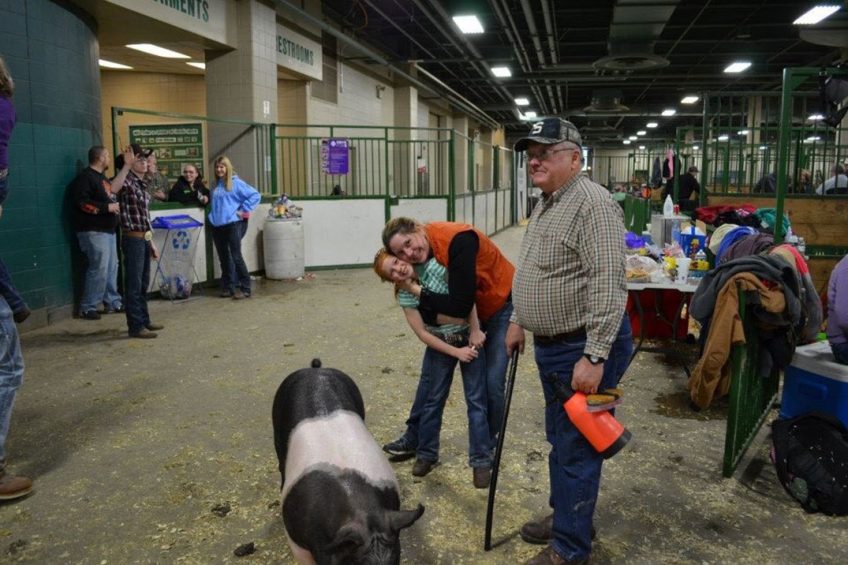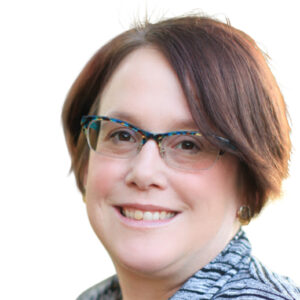A tribute to my father – mentor and swine farmer

As Father’s Day is around the corner, swine nutrition technology expert went back to the place where it all started for her: home, at the farm. She describes the role of her father Craig in embarking on a career in the swine business and how it got her where she is nowadays.
It was just another typical day starting. The sun was rising, and I was full of excitement, itching to go outside and go to work on the farm with my father. In the early 1980s we still raised pigs outside in groups. The group of pigs we were off to check on were just across the driveway living in the basement and lot of a massive white barn that stored the farm’s years’ worth of bedding.
The pigs were just fat and happy as we like to say the day before, but today something was different. There were random dead pigs with swollen purple bellies lying dead in the lot. After my father dragged the corpses out of the lots and stacked them up to dispose of them we went about our remaining tasks for the day or in my world at the time, a day of play.
More dead pigs a vet’s visit
The next day started the same, but there were more dead pigs on the lot and the veterinarian was called because there was no coughing, no diarrhoea, no outward signs of the pigs being sick.
When the veterinarian cut open the pigs the cavities were full of dark blood and fluid and necrosis to the lungs, but as a small budding scientist this was the coolest thing ever. The disease the pigs had is what is known today as Actinobacillus pleuropneumoniae. Before we knew what was happening our mortality was in the double digits.
Care about the pigs
Reflecting on my childhood now from a different perspective I remember different things about that week in my life. My father lost the pep in his step and his head hung a little lower. He was frustrated, he truly cared about the animals in his care and wanted the very best for them.
This is just my 1st memory of a disease outbreak or spike of mortality in my career, but unfortunately a common issue within our industry. In my professional career I have had several cases of double-digit mortality incidences, with 50% preweaning mortality being the worst for me personally. I have physically struggled beyond my human strength to remove a dead sow from a gestation crate with only a winch and snare more times than I want to count. I have carried tractor bucket loads of dead pigs of all ages and sizes to the compost bin. I have gagged on the putrid smell death brings and I am not embarrassed to admit I have tossed my cookies.
Experiences in the swine industry lit a flame
Today, I do not awake in the morning with the same excitement as I did as a child and I am rarely putting on my boots to go and check on the pigs under my care. But my experiences in the swine industry that started 30+ years ago and continued as a manager trainee on an 8,000-sow site in Albin, WY, USA to a research farm manager at the University of Arkansas has lit an internal flame of passion, drive, motivation as an animal scientist and researcher today.
I am trained to dive deep into the details and produce results that have a P<0.05 for validity. i work with colleagues that may never have worked on a farm or lacks the breath of history i have lived in my life. the swine industry faces a shortage of talented or experienced labour; a consumer that does not know how their food is being raised; and an ever-growing list of threats to our sustainability as an industry.>
Becoming the scientist I am today
I have shared a piece of my soul with you today to honour my greatest teacher, mentor and friend, my father. If it wasn’t for him I would not be the scientist I am known for today by the world. But I hope you take this insight into your next meeting, as you design your next protocol, or as you plan next year’s goals, objectives, and even budgets. Reducing mortality in our swine herds is not just a profit driver or an ability to move the needle on greenhouse gas emissions, but an opportunity to improve morale in our employees and keep humanity within our business.

But if you are wanting insight on how to move the needle today on mortality and help me achieve my personal goal of less than 1% mortality in all phases of production for the industry here you go.
- Invest in all technologies that can allow you to intervene before you see a mortality spike. This can be anything from the sensors, algorithms, equipment design, predictive diagnostics or biomarkers, eyes in the sky. Also, take it one step further and evaluate opportunities to manage an individual animal versus the group, because it is one pig at a time dying that increases your mortality percentage, not the group.
- Vaccine, antibiotic, antimicrobial, etc. development. I have had several discussions around antimicrobial resistance (AMR) and ultimately, we tend to narrow the discussions to the impacts of antibiotic usage and resistance within bacteria. But mother nature has this simple law of survival, either adapt and overcome or die. Bacterial organisms and viruses will continue to adapt and find ways to survive by becoming resistant to these alternatives we love to talk about. There will never be a silver bullet to prevent or cure disease for generations to come, but we need to constantly prepare and evolve our science to face these new ‘Super Bugs’.
- Employee education and recruiting. There is a huge pool or talented and technology savvy individuals coming into our workforce. These individuals can bring a new dynamic to our industry that will help us become even more sustainable. But do not forget to mentor, coach, interact outside of your comfort zone and maybe you will be the next person honoured by an animal scientist. If it wasn’t for my father and key individuals that influenced my passions and career path from an early age, I am not sure where I would be today.
Aiming for accomplishments
In closing, let’s roll up our sleeves, stand up straight, and work on this issue together for attainable solutions. I truly do not want to go another 20 years into my career and still feel my goal is still a pipe-dream rather than an accomplishment.
I am doing this for my father, myself, my industry, but also for my world, but I can’t do it alone. Will you join me?











